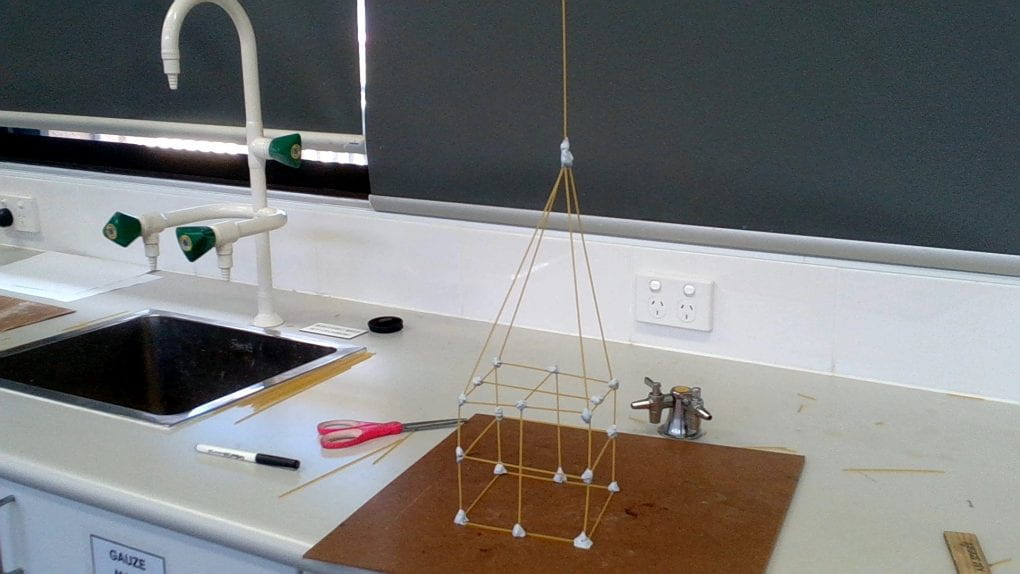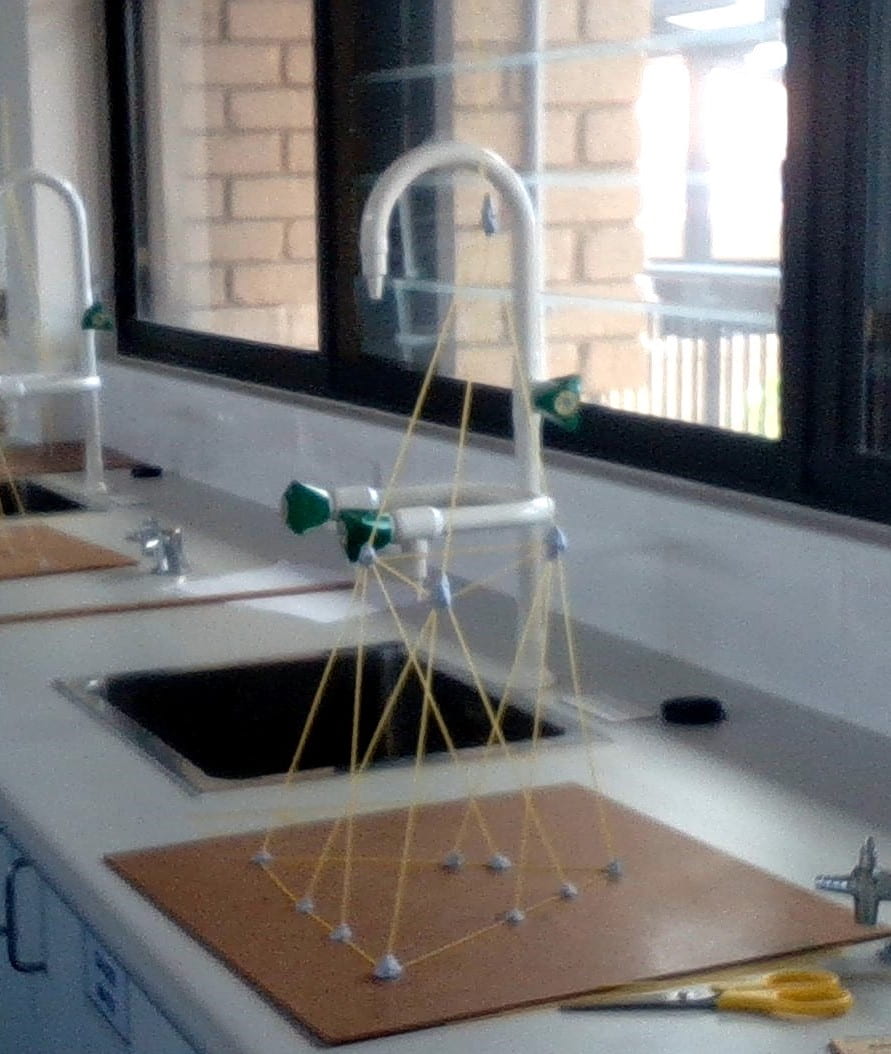For our Year 9 Science project in Term 4, our main objective was to design a strong spaghetti structure that could withstand any ‘major’ earthquake in a small group of 3 or 4 (My group included Isabella Lansbury, Jessica Kim and myself). The project had many rules and challenges that were discovered through doing the project, some including:
Our structure/design, which needed to include a minimum height of 60cm, a maximum base of 30cm x30cm, a total cost of $60 and needed to remain standing after 10 seconds of an earthquake. One of the many challenges we faced was trying to figure out the cost of the budget. The rules of the budget was that a single stand of spaghetti cost $1 per 10cm; meaning each actual strand cost $2.5 as each spaghetti strand measured 25cm in length. Another important rule was, each gram of blue tack cost $1 per gram. In total, it had to all add up to $60. It was hard keeping to the budget due to the fact we kept on changing our designs, trying to find the most suitable structure.
Our first design didn’t go as well as we wanted it to; this was because we didn’t think that we had enough money in our budget to use cross bracing (which is the strongest support for an earthquake structure) so instead we use a plus like braces because it required less spaghetti. This was bad because, this made the structure weak and unstable. It weighed a lot during our test and always stood at an obvious slant.

Since our first design did not work, we went back to the drawing board to re-evaluate and improve our design. Here we made sure to give everyone in the group a time to speak, allowing everyone to chip in on their analysis of strengths and weaknesses of our first design. This meant we could get multiple perspectives on our previous design and could effectively plan out design aspects to keep and areas to improve. More specifically, we wanted to change the base shape of the structure (from a square to a triangular base) and incorporate more cross bracing. By doing this group review, it allowed us to better plan out our second design and organize the remaining time left to complete the structure between our group. In the end, we managed to collaborate and combine all our ideas into one and build a strong structure that could withstand a major earthquake.
Our second design was a lot more successful since we used our cross braces on either sides to help stabilize the structure against lateral loads in the bottom tier, as well as a smaller triangular top tier that didn’t put as much pressure & weight onto the bottom tier and base. The base changed to a triangular shape as triangles are more geometrically stable. Overall, all the important criteria were included in the structure, which was more stable with no obvious swaying, just little vibrations during the earthquake.

Next time, I think we can use more of our budget instead of trying to even out the cost of spaghetti and blue tack. This is because, we didn’t use up all of the blue tack and had a decent amount left over that we didn’t use. We should have put more of our cost towards the spaghetti (especially on our first try), because we were so hesitant about how much money we spent towards blue tack. Overall, we worked effectively as a group and used our previous knowledge from our first structure to make our second structure a lot better.